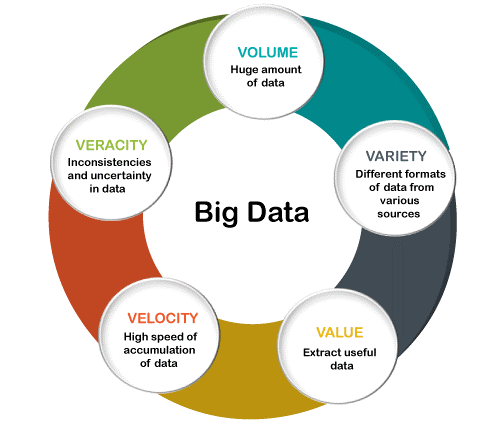Medical Image Processing using Deep Learning Techniques in Big Data Perspective
Main Article Content
Abstract
Artificial intelligence and machine learning will be the driving forces behind the next computing revolution. These technologies rely on the ability to identify trends from historical information and predict future outcomes. One of the best machine learning techniques, deep learning is employed in a variety of applications, including object recognition, picture categorization, image analysis, and clinical archives. Image and video data are necessary for both diagnosing the patient's illness and determining its severity. Convolutional neural networks are efficient gears for digital picture classification and image understanding. The production of medical photographs has ex-ponentially increased as a result of the proliferation of digital devices and the development of camera technology, which creates Bigdata. Massive, difficult-to-manage volumes of structured, unstructured data are referred to as "Big data". The more data processed for analysis, the greater will be the analytical accuracy and also the greater would be the confidence in our decisions based on the analytical findings. In this paper, we proposed a novel method for early detection of pneumonia disease using deep learning techniques along with the big data storage and big data analytics to achieve more better performance. The results show that, the model achieved 91.16% of accuracy and 93.22% of F1-score.
Article Details
References
R. Ashraf et al., "Deep Convolution Neural Network for Big Data Medical Image Classification," in IEEE Access, vol. 8, pp. 105659-105670, 2020, doi: 10.1109/ACCESS.2020.2998808.
Deepika Jaswal, Sowmya.V, K.P.Soman, “Image Classification using Convolutional Neural Networks”, International Journal of Scientific & Engineering Research, Vol.5, Issue 6, June, 2014.
P. N. Kieu, "Applying Multi-CNNs model for detecting abnormal problem on chest x-ray images," in 2018 10th International Conference on Knowledge and Systems Engineering (KSE), 2018.
Y. Bar, I. Diamant, L. Wolf, S. Lieberman, E. Konen and H. Greenspan, "Chest pathology detection using deep learning with non-medical training," 2015 IEEE 12th International Symposium on Biomedical Imaging (ISBI), Brooklyn, NY, USA, 2015, pp. 294-297, doi: 10.1109/ISBI.2015.7163871.
Shah PM, Ullah F, Shah D, Gani A, Maple C, Wang Y, Shahid, Abrar M, Islam SU. "Deep GRU-CNN Model for COVID-19 Detection From Chest X-Rays Data", IEEE Access, 2021 May 5;10:35094-35105. doi: 10.1109/ACCESS.2021.3077592. PMID: 35582498; PMCID: PMC9088790.
Moradi, Mehdi & Madani, Ali & Karargyris, Alexandros & Syeda-Mahmood, Tanveer, "Chest x-ray generation and data augmentation for cardiovascular abnormality classification", 2018, 57. 10.1117/12.2293971.
Lawrence, Tom & Zhang, Li & Lim, Chee & Phillips, Emma-Jane, "Particle Swarm Optimization for Automatically Evolving Convolutional Neural Networks for Image Classification", 2021, IEEE Access, 9. 14369-14386. 10.1109/ACCESS.2021.3052489.
H. Sharma and J. S. Jain, "Feature Extraction and Classification of Chest X-Ray Images Using CNN to Detect Pneumonia," IEEE, pp. 67-73, 2020.
N. N. Zahrani and H. Ramdane , "Comparison Study of Deep-Learning Architectures for Classification of Thoracic Pathology," International Conference on Information and Communication Systems (ICICS), pp. 190-200, 2022.
Y. Yang and Francesco , "Explainable Deep Learning Models on the Diagnosis of Pneumonia," IEEE/ACM Conference on Connected Health: Applications, Systems and Engineering Technologies (CHASE), pp. 130-140, 2021.
Trisha Nag and Saurabh , "Detection of Pneumonia using Chest X-Ray Images and Convolutional Neural Network," International Conference on Reliability, Infocom Technologies and Optimization, pp. 5-9, 2021.
Liu Liu, Cong Li, “Comparative study of deep learning models on the images of biopsy specimens for diagnosis of lung cancer treatment”, Journal of Radiation Research and Applied Sciences, Volume 16, Issue 2, 2023, ISSN 1687-8507, https://doi.org/10.1016/j.jrras.2023.100555.
S. Varela-Santos and P. Melin, “Classification of X-Ray Images for Pneumonia Detection Using Texture Features and Neural Networks”, In Studies in Computational Intelligence, edited by A.S. Sdhu, Springer Nature, Mexico, vol.862 pp.237-253, 2020.
T. Tuncer, F.Ozyurt, S.Dogan, and A.Subasi “A novel Covid-19 and pneumonia classification method based on Ftransform,” Chemometrics and Intelligent Laboratory Systems, Elsevier journal, vol.210,15 March 2021.
P. Rajpurkar, J. Irvin, K. Zhu, B. Yang, H. Mehta, T. Duan, D. Ding, A. Bagul, C. Langlotz, K. Shpanskaya, M. P. Lungren, and A. Y. Ng, “CheXNet: Radiologist-level pneumonia detection on chest X-rays with deep learning,'' 2017, arXiv:1711.05225. [Online]. Available: http://arxiv.org/abs/1711.05225
Josphineleela, R. ., Sundararajan, V. ., K., M. ., Maruthi Varaprasad, A. ., Kumar Yadavalli, P. ., & Praveenadevi, D. . (2023). Ai Based Structural Equation Modelling to Classify the Students’ Performance in Higher Education Institutions. International Journal of Intelligent Systems and Applications in Engineering, 11(4s), 203–212. Retrieved from https://ijisae.org/index.php/IJISAE/article/view/2647
N. Nasrullah, J. Sang, M. S. Alam, M. Mateen, B. Cai, and H. Hu, ``Automated lung nodule detection and classi_cation using deep learning combined with multiple strategies,'' Sensors, vol. 19, no. 17, p. 3722, Aug. 2019.
S. I. Cho, S. Sun, J.-H. Mun, C. Kim, S. Y. Kim, S. Cho, S. W. Youn, H. C. Kim, and J. H. Chung, “Dermatologist-level classification of malignant lip diseases using a deep convolutional neural network,” Brit. J. Dermatol., vol. 182, no. 6, pp. 1388_1394, Jun. 2020.
L. Qu, C. Wu, and L. Zou, “3D dense separated convolution module for volumetric medical image analysis,” Appl. Sci., vol. 10, no. 2, p. 485, Jan. 2020.
J. Son, J. Y. Shin, H. D. Kim, K.-H. Jung, K. H. Park, and S. J. Park, “Development and validation of deep learning models for screening multiple abnormal findings in retinal fundus images,'' Ophthalmology, vol. 127, no. 1, pp. 85_94, Jan. 2020.
Khatri, R. Jain, H. Vashista, N. Mittal, P. Ranjan, and R. Janardhanan, “Pneumonia identi_cation in chest X-ray images using emd,” in Trends in Communication, Cloud, and Big Data. New York, NY, USA: Springer, 2020, pp. 87_98.
M. Sharma and N. Miglani, “Automated brain tumor segmentation in MRI images using deep learning: Overview, challenges and future,” Deep Learning Techniques for Biomedical and Health Informatics. New York, NY, USA: Springer, 2020, pp. 347_383.
Sherje, D. N. . (2021). Thermal Property Investigation in Nanolubricants via Nano- Scaled Particle Addition. International Journal of New Practices in Management and Engineering, 10(01), 12–15. https://doi.org/10.17762/ijnpme.v10i01.96
G. Lee and H. Fujita, “Deep Learning in Medical Image Analysis: Challenges and Applications”, Springer, vol. 1213. New York, NY, USA, 2020.
] Y. Sun, B. Xue, M. Zhang, and G. G. Yen, “Evolving deep convolutional neural networks for image classification,” IEEE Trans. Evol. Comput., vol. 24, no. 2, pp. 394–407, Apr. 2020.
B. Wang, Y. Sun, B. Xue, and M. Zhang, “A hybrid differential evolution approach to designing deep convolutional neural networks for image classification,” Advances in Artificial Intelligence, T. Mitrovic, B. Xue, and X. Li, Eds. Cham, Switzerland: Springer, 2018, pp. 237–250.
Omondi, P., Ji-hoon, P., Cohen, D., Silva, C., & Tanaka, A. Deep Learning-Based Object Detection for Autonomous Vehicles. Kuwait Journal of Machine Learning, 1(4). Retrieved from http://kuwaitjournals.com/index.php/kjml/article/view/149
P. Kinghorn, L. Zhang, and L. Shao, “A hierarchical and regional deep learning architecture for image description generation,” Pattern Recognit. Lett., vol. 119, pp. 77–85, Mar. 2019.
Farah Mohammad, Saad AI Ahmadi, Jalal AI Muhtadi, “Blockchain-Based Deep CNN for Brain Tumor Prediction Using MRI Scans”, MDPI Diagnostics 2023, 13(7), 1229; https://doi.org/10.3390/diagnostics13071229.
Almalki, Y.E.; Ali, M.U.; Kallu, K.D.; Masud, M.; Zafar, A.; Alduraibi, S.K.; Irfan, M.; Basha, M.A.A.; Alshamrani, H.A.; Alduraibi, A.K. , “Isolated Convolutional-Neural-Network-Based Deep-Feature Extraction for Brain Tumor Classification Using Shallow Classifier”, Diagnostics 2022, 12, 1793.
Suvita Rani Sharma, Samah Alshathri , Birmohan Singh, Manpreet Kaur, Reham R. Mostafa and Walid El-Shafai, “Hybrid Multilevel Thresholding Image Segmentation Approach for Brain MRI”, Diagnostics 2023, 13(5), 925; https://doi.org/10.3390/diagnostics13050925.

